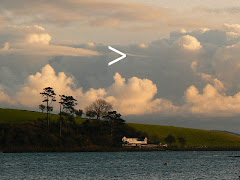 Each winter the terns of Strangford Lough – for me the prettiest and most endearing of the seabirds - make an unbelievable round trip of up to 10,000 miles to the arctic and back, arriving in Ringhaddy Sound at the end of April/beginning of May, to breed. This season they were early – we spotted the first common tern off the jetty on 14th April – which kind of caught us on the hop because the raft wasn’t ready. The same pair have been returning to our raft for the past four years. We tend to take it out of the water for the winter as until recently it was anchored to the mooring only by a hemp rope, and would no doubt have taken off some stormy night, never to be seen again.
Each winter the terns of Strangford Lough – for me the prettiest and most endearing of the seabirds - make an unbelievable round trip of up to 10,000 miles to the arctic and back, arriving in Ringhaddy Sound at the end of April/beginning of May, to breed. This season they were early – we spotted the first common tern off the jetty on 14th April – which kind of caught us on the hop because the raft wasn’t ready. The same pair have been returning to our raft for the past four years. We tend to take it out of the water for the winter as until recently it was anchored to the mooring only by a hemp rope, and would no doubt have taken off some stormy night, never to be seen again.Anyway it was still out of the water when the terns showed up, so for the first fortnight they made do with the dinghy. Every morning I scrubbed the outboard and marvelled afresh at the adhesive properties of tern poo; and when we finally got around to returning their courting platform to the water, the pair of them shifted gratefully back to it within the hour.
They go through the same little rituals every season. A few days of rest followed by a week or two of courtship during which the male seems to do a great deal of chasing, most of the fishing and a heroic amount of defensive manoeuvring against the rivals who appear from nowhere to try to take his place. There follows a period of relative calm when presumably most of the birds have found a mate; then they spend increasingly longer periods away from the raft in search of a nest site, until eventually only the male returns, leaving the female to incubate a clutch of spectacularly well camouflaged eggs on a shingly shelf above the high water mark of one of the lough’s distant island colonies. The male continues to fish – for himself and his mate, and as I write, probably for three or four hungry and increasingly demanding youngsters too.
The picture is of the male taking a well-earned rest. In a few more weeks he will be rejoined by his mate, and they will work the shoreline together until September. For many people around Strangford Lough, the arrival of the brent geese marks the onset of winter; for us, it’s the departure of the terns.














